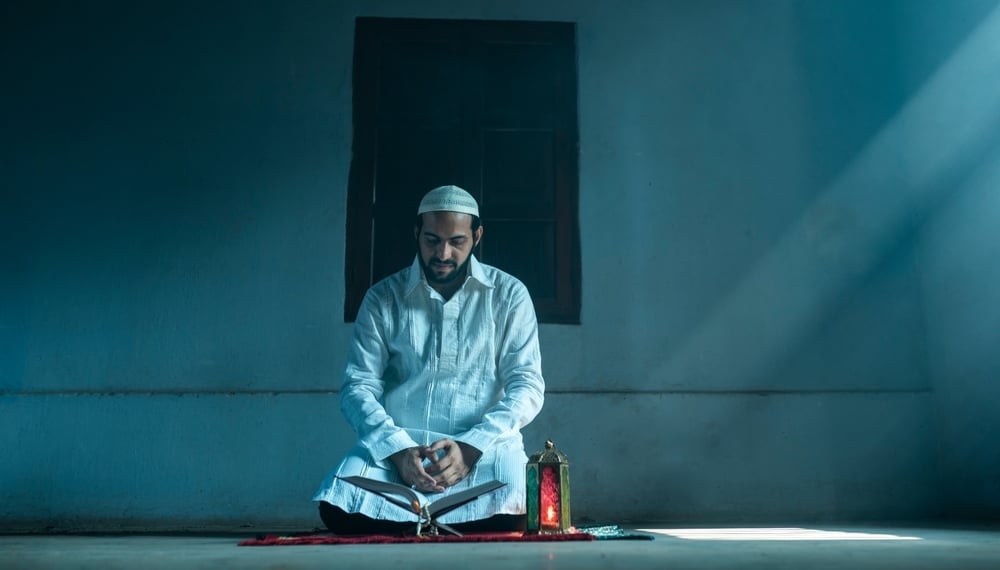What Does Sacred Law Say About Praying in a Room with Images?
Answered by Shaykh Irshaad Sedick
Question
Is praying in a room with images, specifically when the images are positioned to the side, more disapproved of in other schools of thought (not Hanafi)?
I came across one of your fatwas stating that it is sinful if the images are to the side or in front of the worshipper. In other schools, I have heard that praying in a room with images is considered makruh.
I am curious whether these Schools also emphasise the disapproval if the images are in front or to the side, and if it reaches the extent of considering the act sinful.
Answer
In the Name of Allah, the Most Merciful and Compassionate. May Allah alleviate our difficulties and guide us to what pleases Him. Amin.
Praying in a place with images is not invalid but disliked (makruh) according to most scholars and prohibitively disliked (at times) according to the Hanafis.
The prayer is still valid if its conditions and integrals are fulfilled. The dislike is due to the distraction caused by images, diverting the worshipper’s attention and hindering complete focus and humility in prayer.
Anything that distracts from humility in prayer and occupies the worshipper’s heart will be treated like images. This includes images and sounds on a television, radio, smartphone, computer, etc.
Praying in a place with active screens (TVs, smartphones, and computers) or where such sounds may distract them is not advisable. However, the prayer itself is not invalidated by this, and Allah knows best.
Shafi‘i School
Imam Nawawi (Allah have mercy on him) said: “As for a garment with images, a cross, or anything distracting, it is disliked to pray in it, toward it, or on top of it. However, the prayer is still valid.” This is based on a narration from ‘Aisha (Allah be pleased with her). [Al-Majmu‘ Sharh al-Muhadhdhab]
Hanafi School
At the level of generality, it is prohibitively disliked praying towards a picture of an animate being which (a) is not small nor (b) missing a vital limb, or (c) does not have its face effaced. [Shurunbulali, Maraqi al-Falah]
The dislikedness varies depending on the whereabouts of the person praying and the picture. The strongest form of dislike is when the picture is in front of you, and the weakest is having the picture behind you. [ibid.]
However, the scholars clarify that this refers to prohibited pictures, specifically paintings and the like, as opposed to photographs, about which, there are differing views.
Therefore, they would be included according to the stricter position and not otherwise. However, caution would entail avoiding both when reasonably able to do so.
Hanbali School
Ibn Qudama (Allah have mercy on him) mentioned: “It is disliked to look at something distracting during the prayer or to read from a book.
‘Aisha (Allah be pleased with her) narrated that the Prophet (Allah bless him and give him peace) prayed in a garment with designs and said: “The designs of this garment distracted me; take it to Abu Jahm Ibn Hudhayfa, and bring me his Anbijaniyya (a type of cloak).”
The Prophet (Allah bless him and give him peace) also said to ‘Aisha: “Remove this curtain from us, as its images continue to distract me in my prayers.” [Al-Mughni]
Knowing this, it is recommended to pray in a place where you are not distracted during the prayer and not engaged in anything that diverts your attention from it. If you pray in a place with images, ensure they are behind you or to the side, as many scholars do not object to this.
Maliki School
Praying towards a wall with an image or statue is disliked due to the resemblance of worshipping idols and statues. This dislike exists even if the image is small and not noticeable to the observer.
However, it is not disliked if the image is not erected or if one prostrates on an image or has an image behind one in the house. It is also not disliked if the image is above one’s head in the ceiling or on one of its sides…” [Bahuti, Kashshaf al-Qina‘]
In conclusion, strive to pray where you can fully concentrate on your prayer without being distracted. May Allah guide us all.
And Allah knows best.
I pray this is of benefit and that Allah guides us all.
[Shaykh] Irshaad Sedick
Checked and Approved by Shaykh Faraz Rabbani
Shaykh Irshaad Sedick was raised in South Africa in a traditional Muslim family. He graduated from Dar al-Ulum al-Arabiyyah al-Islamiyyah in Strand, Western Cape, under the guidance of the late world-renowned scholar Shaykh Taha Karaan (Allah have mercy on him), where he taught.
Shaykh Irshaad received Ijaza from many luminaries of the Islamic world, including Shaykh Taha Karaan, Shaykh Muhammad Awama, Shaykh Muhammad Hasan Hitu, and Mawlana Abdul Hafeez Makki, among others.
He is the author of the text “The Musnad of Ahmad ibn Hanbal: A Hujjah or not?” He has been the Director of the Discover Islam Centre, and for six years, he has been the Khatib of Masjid Ar-Rashideen, Mowbray, Cape Town.
Shaykh Irshaad has fifteen years of teaching experience at some of the leading Islamic institutes in Cape Town). He is currently building an Islamic podcast, education, and media platform called ‘Isnad Academy’ and has completed his Master’s degree in the study of Islam at the University of Johannesburg. He has a keen interest in healthy Prophetic living and fitness.
